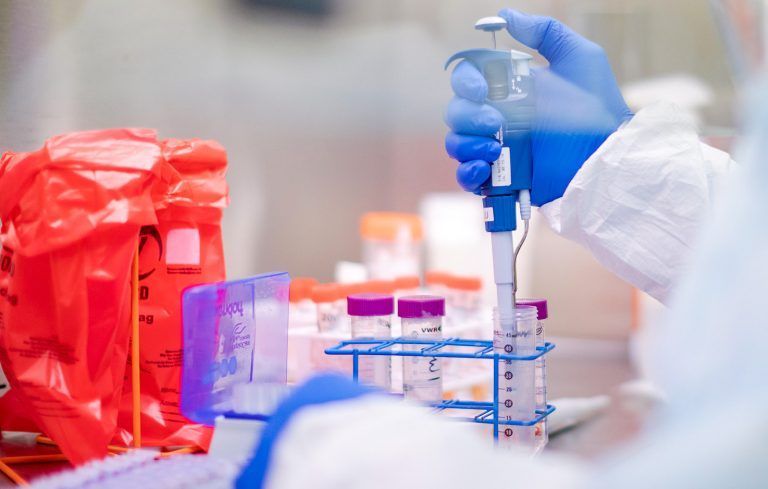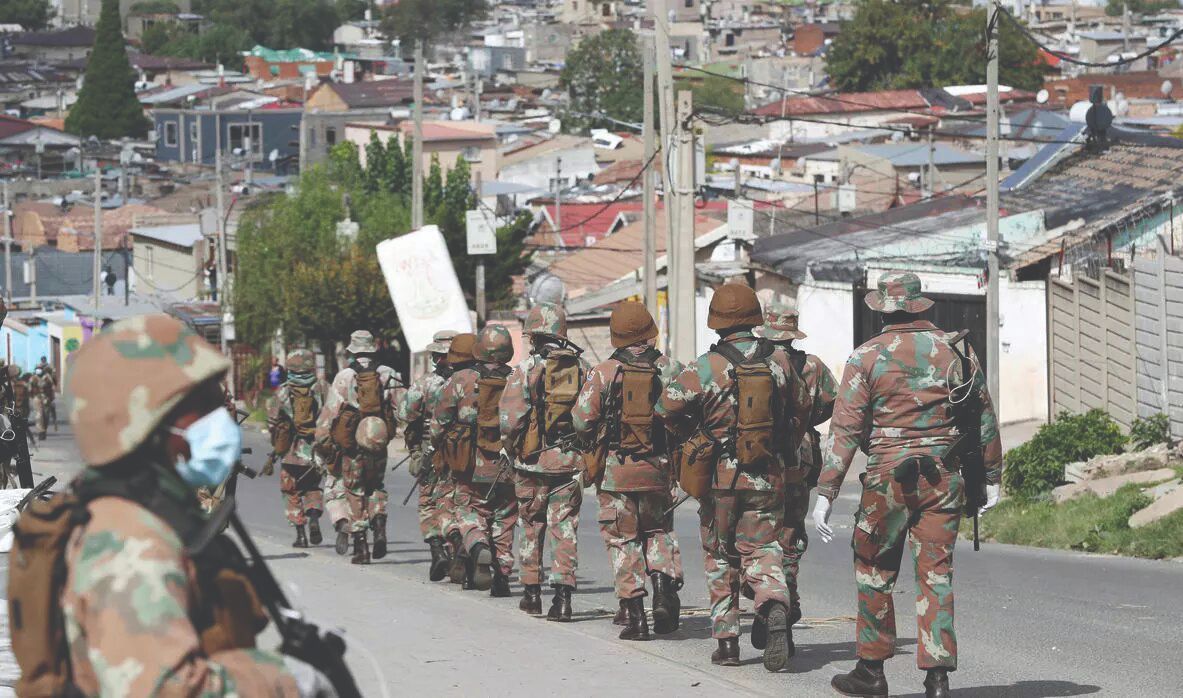The World Health Organization (WHO) has been urging countries, since the onset of the COVID-19 outbreak, to test, test, test. “You can’t fight a virus if you don’t know where it is,” said WHO director general, Tedros Adhanom Ghebreyeus. “Find, isolate, test and treat every case, to break the chains of transmission. Every case we find and treat limits the expansion of the disease.” Without testing, the virus will come roaring back as soon as social distancing guidelines are relaxed.
Despite this sound advice, few countries, including Canada, have been following it. As a result, we in Canada may be missing hundreds, if not thousands, of cases. To most of us, testing seems perfectly logical. If we know who is infected, we can then isolate, monitor and treat them if necessary. Yet there are countless stories of people with symptoms of Covid-19 who have been denied testing and instead are told to go home and self-isolate.
Canada’s approach contrasts with that of a very small number of countries, which seem to have a grip on the coronavirus. China was slow to respond and then tackled the virus through brutal repression, locking down the entire province of Hubei. Such actions would probably be unacceptable in Canada.
South Korea, on the other hand, carried out mass testing from day one. Based on past experience of virus outbreaks, it had large stockpiles of testing kits and over 40, already built, testing centres that were not in hospitals. One of the most expansive and well-organized testing programs in the world allowed them to rapidly identify infected people, isolate and, if needed, treat them, and trace and quarantine their contacts. Within a month, the number of coronavirus cases had dropped sharply, without resorting to China’s mass quarantine of entire regions.
British Columbia is now testing only those with respiratory systems who are hospitalized or likely to end up in hospital, health-care workers, long-term care facility residents, or those who are part of a cluster or outbreak investigation. Those with mild symptoms or who have returned from travel, a higher risk group, are told instead to self-isolate at home. This is similar to what is being done elsewhere in the country.
Yet, even clusters of infections are not all being tested. It was reported by CBC that a cluster of at least 11 people came down with symptoms after attending a March 13 memorial service at the Unitarian Church of Vancouver, with a hundred people in attendance. They were refused testing, instead being told to self-isolate.
Various countries have taken very different approaches to testing, some hardly doing any, some restricting testing to those who can pay or to those at greatest risk of passing the virus onto vulnerable people, such as health care workers. A very small number of countries appear to be taking testing seriously.
In addition to South Korea, Germany also is rigorously testing for the coronavirus. It is estimated that a close to a million people have been tested in Germany in the last three weeks. While Germany has the fifth highest number of cases in the world, at 66,885 on March 30, its fatality rate – at about 0.09% – is the world’s lowest. This contrasts with Italy’s fatality rate of about 10% and France’s of over 6%. Part of this is attributed to Germany’s early and extensive testing. However, it now seems likely that Germany’s growing number of cases may soon exceed testing capacities. Another factor is that Germany is better prepared than many countries, having one of the best-funded healthcare systems in the world. It ranks fourth in per capita spending among OECD nations, while Canada ranks 11th. Italy at 22nd and Spain at 23rd, have both been hard hit.
Canada is lagging far behind, with its lacklustre approach to testing, relying instead on social or physical isolation measures to slow down the rate of transmission. Public health officials seem to be putting most of their eggs in this basket, hoping that physical isolation will help the healthcare system to not be overwhelmed as there are dangerously low supplies of ventilators, critical care beds in hospitals and medical protective equipment. They characterize it as a race against time. But this is a potentially dangerous strategy, as it relies solely on compliance by individuals. While many people have started working from home and many have been laid off, there are still many workers on the job, some in essential services and others on large construction and industrial projects.
Another issue has been a lengthy lag time between testing and getting results. This has been particularly acute in Ontario. In recent days, the backlog has lessened but there is still a reported 7,000 case backlog.
So why are tests being rationed? One major problem is a shortage of laboratory supplies, particularly swabs. Another issue appears to be the incapacity of labs to keep up with the demand for tests. A long wait time is not acceptable – it leaves people in limbo. Good public health practice depends on information and a long wait time does not provide the information that either the patient or the system needs.
More and more doctors are speaking out about their concerns about Canada’s inadequate level of testing. Dr. Sean Wormsbecker, who works in the emergency department at Royal Columbian Hospital in New Westminster, BC posted a You Tube video this past weekend, outlining his concerns about having to send people away without testing them. Wormsbecker said he decided to speak publicly because he’s frustrated and concerned for the weeks to come and fears people will not take their symptoms seriously if they aren’t tested. “I simply don’t want people to let their guard down because we’re not at a stage where we can afford to do that. If we start easing up on social distancing, we’re going to see harm,” he said.
Dr. Jane Philpott, former MP and federal Minister of Health, who is now working in the Markham Stouffville Hospital COVID-19 Assessment Centre says, “Many experts are advocating to aggressively increase testing capacity. Doctor and infectious disease specialist Andrea Crisanti, who has been working in Italy advises us to ‘test the neighbourhood, test the relatives, test the friends, and isolate all positive individuals.’ Deadly virus outbreaks are controlled when people know their status. Knowledge impacts behaviour.”
Citing the examples of South Korea and Singapore where massive testing has led to containment of the virus, she urged Canada to do the same. “We can train and mobilize an army of public health outreach workers to deliver information and tests. We can vastly expand lab capacity using academic hospitals, universities and private labs, recruiting graduate students for technical work from across the basic sciences and health professions. We will need coordinated procurement of reagents and equipment…. We can recruit medical and nursing students to assist in contact tracing, isolation instructions, and follow up of all positive cases.”
There are many sound reasons to urge mass testing. Testing allows infected people to know that they are infected, and this can help them receive necessary care and take measures to reduce the probability of infecting others. Crucially, testing allows healthcare workers to identify people with the disease and help isolate them and the people they’ve been in contact with. This was a key part of what was done in South Korea.
Testing also allows public health officials to understand the spread of the disease and take evidence-based measures to slow down its spread. There is a lot that public health officials still do not know about COVID-19 and part of the reason is the inconsistent testing around the world and almost complete lack of testing in some areas. We know that it is highly infectious, but we do not know much more about how easily it spreads, particularly by those not exhibiting symptoms.
We do not know the true extent of the COVID-19 pandemic. Amesh Adalja, an infectious disease physician and a senior scholar at the Johns Hopkins Center for Health Security in Baltimore, Md., said a lack of testing hinders our ability to know how deadly COVID-19 truly is. This is echoed by Dr. Allison McGeer, of Mount Sinai Hospital in Toronto, who said that to truly know how deadly COVID-19 is around the world, we need to rapidly scale up our ability to test for potential cases — especially in those who may not display symptoms.
Testing is not a luxury, WHO officials stress. Rather, it is the key to containing the spread of the virus. Only by knowing who is infected can public health officials stop the chain of infection.
“The very foundation of public health is the notion that an ounce of prevention is worth a pound of cure. If we could expand capacity for testing, it would add to critical measures like physical distancing. Health workers on the ground desperately want public officials to take every possible step to lessen the burden of disease so critical care and emergency health teams will not be overwhelmed and the volume of suffering and grief will not consume society,“ said Jane Philpott.
Socialist Alternative Canada demands that we protect the health of all people in Canada. A first step is to dramatically increase testing by:
- Ensuring the most vulnerable populations such as elderly people living in care homes, homeless people and people in prisons have ready access to testing.
- Ordering labs, both private and university, that are not doing other essential research in the public interest, to dramatically increase testing.
- Commandeering production facilities to dramatically increase the supply of vital equipment including test kits, ventilators and protective gear for health workers.
In a society where human needs come before corporate profit, priority would be given to creating a health system which is democratically-run, fully-public, where workers would be protected, and decisions would be made in the short- and long-terms interests of all of us. We should demand no less of our governments.




